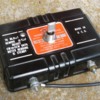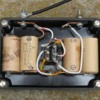Hi Guys and Gals,
I have 3 Post War ZWs that I use on my layout and I use all 6 throtles. I have built the Dale diode ladder for introducing +/- 5V DC into the circuit. I am considering a different approach, though, where I have a 5V external DC Bus that I can tap into for bell whistle control. I tried hooking up a 6 V battery and was able to sound the whistle and bell by reversing the polarity. I have two questions: 1. Is this a bad idea to introduce an external power supply? and 2. If it is OK, does anyone have a recommendation for either a 12V AC or 110V AC to 5 V DC power supply to use.
Cheers
Denny










